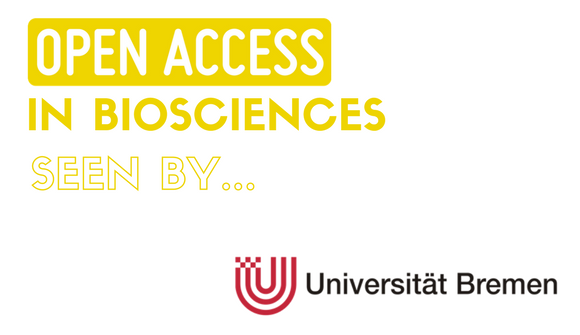
How do you understand Open Access in biosciences research?
Besides scientific publications of research results, the free access to databases for sequences of bio molecules like DNA, RNA and proteins is crucial for the field of biosciences. Whereas the access to most genomic databases is already free, the Open Access to research publications is still on the way.
“If I saw further than other men it was because I was standing on the shoulders of giants.”
This quotation from Isaac Newton shows that research is always based on the results of previous research. The access to scientific publications is a prerequisite for any research activity. Open Access provides the free and unrestricted access to scientific publications via the internet. This is not just a benefit for the research community itself, but also for the society as a whole: every interested person has access to scientific research results.
What are the current standards and actions to achieve better Open Access in your University and in your country?
The “Berlin Declaration on Open Access to Knowledge in the Sciences and Humanities” from 2003 is one important milestone in establishing Open Access in the German science system. All big science institutions in Germany – e. g. Max Planck Society, Helmholtz-Association and German Research Foundation– are among the first who signed in the declaration. Up to date more than 550 German and international institutions have signed in and admit to support and foster Open Access.
The University of Bremen sets up an Open Access policy in 2011. This policy comprises the signing of the “Berlin Declaration” and encourages the members of the university to publish their research findings in Open Access. At the State-Library of the University of Bremen (SuUB), one staff member is responsible for supporting publications in Open Access by offering tailored information about the procedure and the way of funding. The number of Open Access publications in the field of biosciences at the University of Bremen has increased significantly since 2011. The graphic presents only the Open Access publications that were processed via the SuUB.

Figure 1: Open Access publications in Biology processed via the SuUB at University of Bremen
What are you aiming for with the implementation of the STARBIOS2 actions towards better Open Access standards for your institute?
The Open Access strategy of the University of Bremen is quite well, but still not transparent to all members of the Faculty02. One of our goals of the STARBIOS2 Action Plan is to promote the awareness and the knowledge about the existing Open Access strategy of students and researchers of all career levels. Open Access should become the standard of scientific publications at Faculty 02 Biology and Chemistry.
What kind of actions are you going to establish to fulfil your objectives?
One of our actions is to identify the needs and barriers in regard to Open Access at the Faculty 02. The list of criteria will contribute to the development of supportive activities. One idea is to adapt the existing workshop on Open Access to the special needs of biosciences. Furthermore the faculty-intern website will be extended by information about Open Access in general and the existing methods and measures in respect to Open Access at the University of Bremen.
Who is involved, from your University, in the AP in order to complete your final objective?
As STARBIOS2 focuses on structural change in respect to Open Access on the faculty-level all stakeholders of Faculty 02 are involved: dean, professors, research group leaders, Postdocs, PhD students, students and representatives of the library and Bureau of Study.
Read our prevous Q&A with the University of Bremen on Gender in Biosciences.







